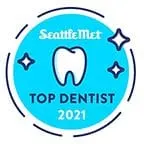
Braces are applied to teeth for various reasons, including poorly aligned jaws, crooked, crowded and missing teeth, or a bad bite (also called malocclusion).
Various things can cause teeth to become crooked or jaws misaligned, including thumb-sucking or a traumatic injury. Some conditions are inherited.
Children between the ages of 7 and 14 are typical candidates for braces because their facial structures are still developing. Adult braces usually entail additional treatment time because their faces have already fully developed.
About Braces
Orthodontics is a field of dentistry that deals with corrections involving jaw and teeth alignment.
Braces employ the use of wires held in place by metal or plastic brackets that are cemented or bonded to teeth.
Procedures
Orthodontic procedures, also called "orthodontia," are complex processes.
In most cases, a dentist will need to make a plaster cast of the individual's teeth and perform full X-rays of the head and mouth.
After orthodontic appliances are placed, they need to be adjusted from time to time to ensure that they continue to move the teeth into their correct position.
Retainers are used following braces to ensure that teeth remain in position.
Aesthetic and Comfort Issues
Advances in technology have vastly improved appearance issues with orthodontia.
Braces today are made from extremely lightweight and natural-colored materials. The materials that braces attach to-brackets-are bonded to the surfaces of teeth but can be later removed.
People can expect to wear braces for about two years-less or more in some cases. Adults are usually required to wear braces for longer periods of time.
Because orthodontic appliances need to be adjusted from time to time to ensure they continue to move the teeth into their correct position, they can create pressure on the teeth and jaws. This mild discomfort usually subsides following each orthodontia adjustment.
Hygiene issues
People who wear braces must be diligent in ensuring that food particles and other debris do not get trapped in the network of brackets and wires. In addition, brackets can leave stains on enamel if the area surrounding them is not cleaned on a daily basis.
Daily oral hygiene such as brushing, flossing and rinsing are a necessity.
Another caveat: Braces and sticky foods don't mix. Crunchy snacks and chewy substances should be avoided at all costs because they can cause orthodontia to be loosened or damaged.
Cavities and Tooth Decay
What Is Tooth Decay?
Tooth decay is caused by a variety of things; in medical terms, cavities are called caries, which are caused by long-term destructive forces acting on tooth structures such as enamel and the tooth's inner dentin material.
These destructive forces include frequent exposure to foods rich in sugar and carbohydrates; soda, candy, ice cream-even milk-are the common culprits. Left inside your mouth from non-brushing and flossing, these materials break down quickly, allowing bacteria to do their dirty work in the form of a harmful, colorless sticky substance called plaque.
The plaque works in concert with leftover food particles in your mouth to form harmful acids that destroy enamel and other tooth structures.
If cavities aren't treated early enough, they can lead to more serious problems requiring treatments such as root canal therapy.
Preventing Cavities
The best defense against cavities is good oral hygiene, including brushing with a fluoride toothpaste, flossing and rinsing. Your body's own saliva is also an excellent cavity fighter, because it contains special chemicals that rinse away many harmful materials. Chewing a good sugarless gum sweetened with Xylitol will stimulate saliva production between brushing.
Special sealants and fluoride varnishes can also be applied to stave off cavities from forming.
If you have any of the following symptoms, you may have a cavity:
- Unusual sensitivity to hot and cold water or foods.
- A localized pain in your tooth or near the gum line.
- Teeth that change color.
Baby Bottle Tooth Decay
Baby bottle tooth decay is caused by sugary substances in breast milk and some juices, which combine with saliva to form pools inside the baby's mouth.
If left untreated, this can lead to premature decay of your baby's future primary teeth, which can later hamper the proper formation of permanent teeth.
One of the best ways to avoid baby bottle tooth decay is to not allow your baby to nurse on a bottle while going to sleep. Encouraging your toddler to drink from a cup as early as possible will also help stave off the problems associated with baby bottle tooth decay.













